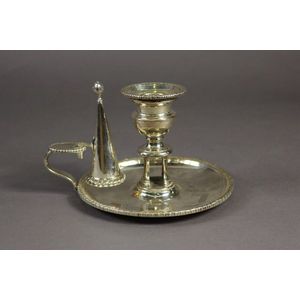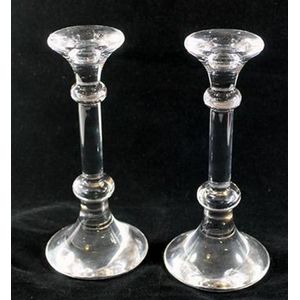Georgian Air-Twist Stem Wine Glasses (Set of 4)
You must be a subscriber, and be logged in to view price and dealer details.
Subscribe Now to view actual auction price for this item
When you subscribe, you have the option of setting the currency in which to display prices to $Au, $US, $NZ or Stg.
- Georgian - As an English stylistic period, Georgian is usually taken to cover the period from George I (1714) to the Regency of Prince George (1811-20), although the period from 1800 to 1830 is sometimes designated as the Regency period. During the Georgian period the great English cabinetmakers and designers such as Chippendale, Hepplewhite, Adam Sheraton etc., were all active.
Therefore there isn't a single 'Georgian style' as such and to say something is 'Georgian', usually means it was made between 1714 and 1830. This assumes we discount George V and George VI, both being from the 20th century.
The styles popular at the time of each reign were:
George I (1714-1727) saw out the last years of the Baroque period.
George II (1727-1760) reigned during the Rococo period.
George III (1760-1820) saw the last gasp of the Rococo, all of the early Neo-Classic 'Adam style' and most of the later neo-Classic 'Regency style'.
George IV (Prince Regent 1820-1830)encompassed the last of the 'Regency' style.
William IV's reign (1830-1837) was something of a no man's land (stylistically) and he wasn't a 'George' anyway. He covered the last glimmerings of 'Regency' and the start of the 'Victorian' style. - Folded Foot - A drinking glass with a rounded edge to the foot, where the foot is effectively double-layered by turning it, usually under but sometimes over and then flattened , against the disk of the foot, to provide extra stability and reduce the risk of chipping or breakage.
The technique originated in Venice during the Renaissance and was adopted by English glassmakers who continued to fold the feet of drinking glasses and bowls until c1750. - Bowl - With drinking glasses, the bowl is the hollow section of the glass that holds the liquid. Many glasses were mounted on a stem joined to a foot, others were cylindrical, of tumbler shape. The size and shape of the bowl was determined by the type of liquids they were meant to hold. Shapes used included bell shaped, conical (funnel), bucket shaped, trumpet, cup, ogee, funnel, cylindrical and rounded.
This item has been included into following indexes:
Visually similar items

Five various Georgian wine and cordial glasses, mid 18th century, (5) the largest with airtwist stem, two with opaque twist stems and two with plain stems, bell and conical bowls, conical foot, (5), tallest 17.5 cm, 16.5 cm, 15.5 cm, 15.0 cm, 14.5 cm

George III hallmarked sterling silver chamber stick and extinguisher by Matthew Boulton, Sheffield 1817, 365 grams and 15 cm diameter

A pair of Val St Lambert crystal candlesticks

A pair of silver vases, tapered form, wooden base; Stewart Dawson & Co Ltd, Birmingham, 1922. Height 13.5 cm. Weight 215g.
